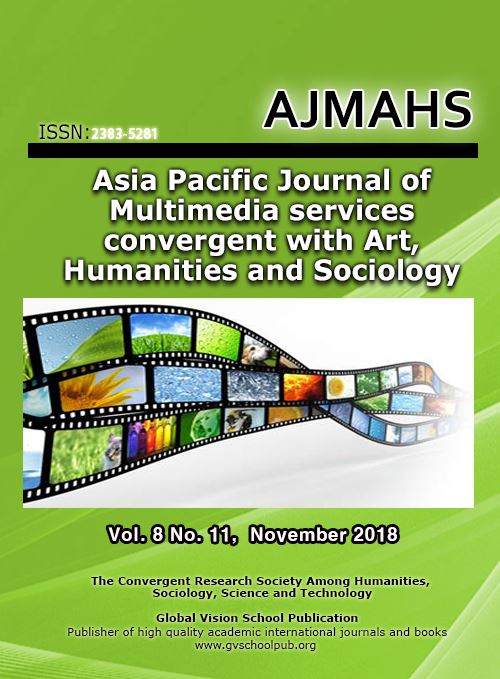은행의 생산성변화 분석
Analysis of Productivity Change of Korean Banks
- 인문사회과학기술융합학회
- 예술인문사회융합멀티미디어논문지
- 8권 11호
-
2018.11133 - 145 (13 pages)
- 58

본 연구는 1995년부터 2016년까지 총 22년간의 우리나라 12개 일반은행의 인적자원 및 재무자료를 이용하여, 은행산업의 효율성변화, 기술변화 및 생산성변화의 추세를 분석한다. 구체적으로 1995년 이후 기간이 경과됨에 따라 효율성변화, 기술변화 및 생산성변화가 어떠한 행태를 보이고 있는 지에 대해 검토할 뿐만 아니라, 일반은행의 기업특성변수가 은행산업의 효율성변화, 기술변화 및 생산성변화에 미치는 영향을 실증적으로 규명한다. 본 연구의 실증분석 결과를 요약하면 다음과 같다. 첫째, 1995년 대비 2016년의 효율성변화는 9.01%만큼 악화된 것으로, 기술변화는 94.12%만큼 개선된 것으로, 생산성변화는 85.12%만큼 향상된 것으로 나타났다. 둘째, 1995년 이후 기간이 경과됨에 따라 효율성변화는 역(逆) U 모양 형태를 보였으나, 기술변화와 생산성변화는 포물선(parabola)형태를 뛰고 있는 것으로 확인되었다. 셋째, 시중은행 그룹은 지방은행 그룹보다 기술진보와 생산성향상에 유의적으로 높은 것으로 나타났으나, 두 그룹간의 효율성변화의 차이는 없었다. 넷째, 총자산순이익률의 변화, 순이자마진의 변화, 자기자본 대비 부채비율의 변화 및 자기자본 대비 업무용 고정자산비율의 변화는 효율성변화에 유의한 음(-)의 영향을, 총대출금 대비 기업자금 대출비율의 변화와 총대출금 대비 가계자금 대출비율의 변화는 기술변화에 유의한 음(-)의 영향을, 자기자본 대비 부채비율의 변화, 자기자본 대비 업무용 고정자산비율의 변화, 무수익여신비율의 변화, 총대출금 대비 기업자금 대출비율의 변화 및 총대출금 대비 가계자금 대출비율의 변화는 생산성변화에 유의한 음(-)의 영향을 미치는 것으로 나타났다. 다섯째, 예대율의 변화는 효율성변화, 기술변화, 그리고 생산성변화 각각에 대해 통계적으로 유의한 양(+)의 영향을 미치는 것으로 파악되었다.
Using human resource and financial data from 12 commercial banks in South Korea for the 1995-2016 period, this study analyzes the trends of efficiency change, technical change and productivity change and how efficiency change, technical change and productivity change have behaved over time since 1995. Furthermore, this study empirically investigates what firm characteristic variables determine efficiency change, technical change and productivity change in the Korean banking industry. Main empirical results drawn from this study can be summarized as follows. First, the average Korean commercial bank experienced an efficiency deterioration of 9.01%, a technical progress of 94.12%, and a productivity growth of 85.12% between 1995 and 2016. Second, it is confirmed that there exist an inverted U-shaped trend of efficiency change and a parabola shaped trend of technical change and productivity change over time. Third, nationwide commercial banks are shown to outperform regional commercial banks in technical progress and productivity growth, but not efficiency change. Fourth, it is documented that (1) the firm characteristic variables including change in return on assets, change in net interest margin, change in debt-to-equity ratio, and change in the proportion of fixed assets for the business purpose relative to equity have a significant and negative impact on efficiency change, (2) the firm characteristic variables including change in the proportion of company loans relative to total loans and change in the proportion of personal loans relative to total loans have a significant and negative effect on technical change, and (3) the firm characteristic variables including change in debt-to-equity ratio, change in the proportion of fixed assets for the business purpose relative to equity, change in non-performing loan ratio, change in the proportion of company loans relative to total loans and change in the proportion of personal loans relative to total loans have a significant and negative impact on productivity change. Lastly, it is also demonstrated that change in loans to deposits ratio has a significant and positive effect on efficiency change, technical change and productivity change, respectively.
1. 서론
2. 연구모형
3. 데이터와 변수의 기술통계
4. 실증분석 결과
5. 결론
(0)
(0)